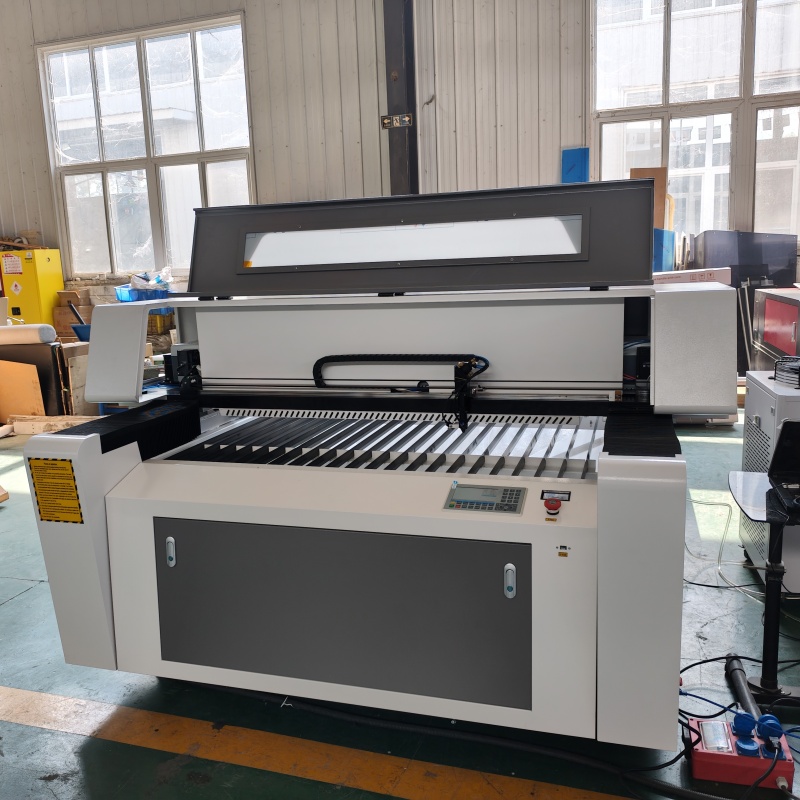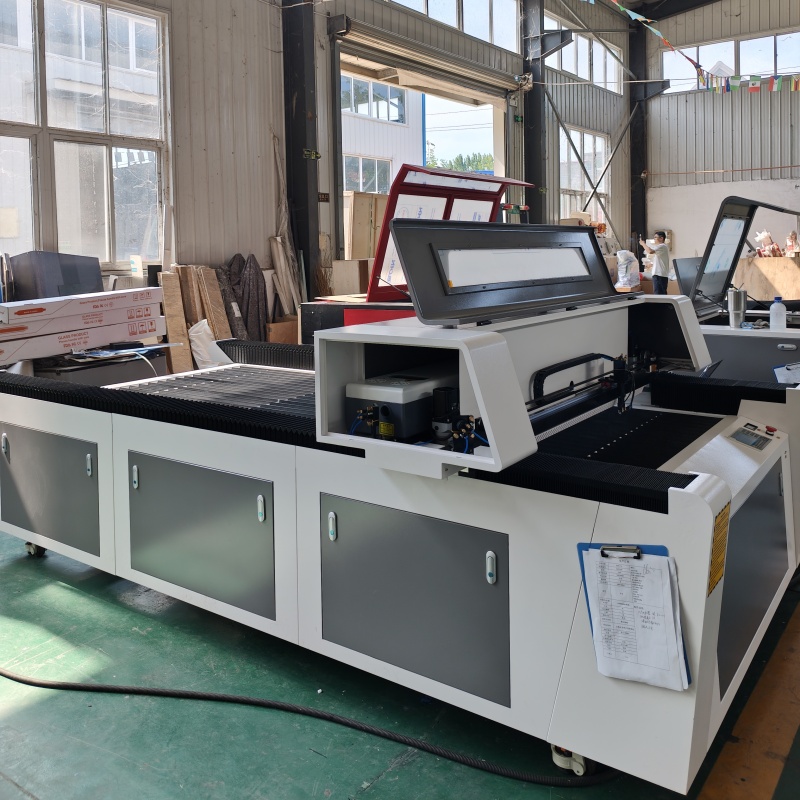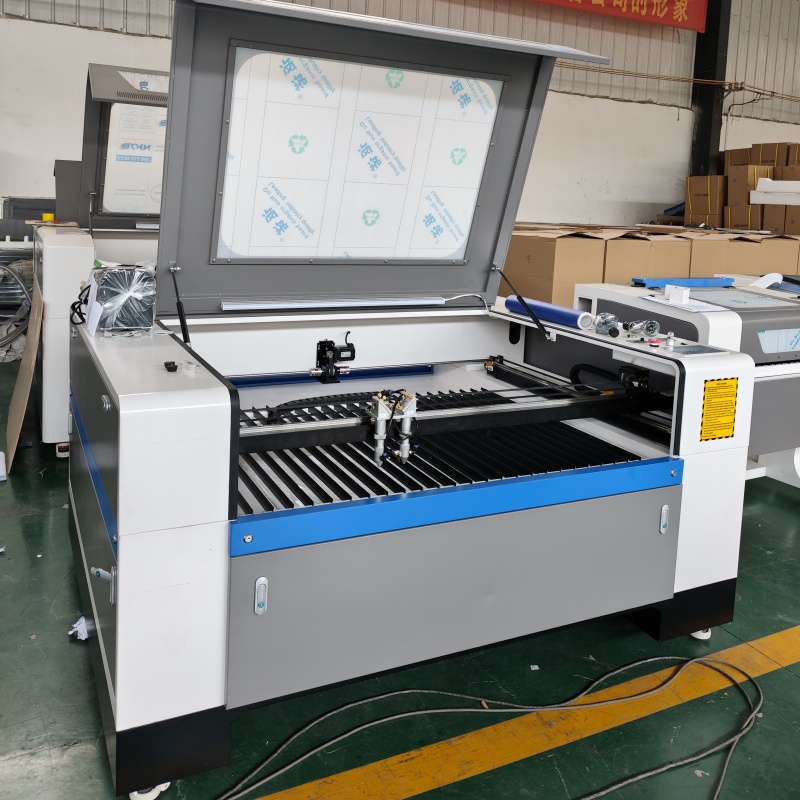In industrial manufacturing, high-precision cutting is crucial for ensuring product quality. CO2 cutting machines, with their exceptional precision, have become crucial equipment for processing both metal and non-metallic materials. From millimeter-level cutting to micron-level cutting, what technical means enable precise control? This is achieved through a sophisticated system integrating optics, mechanics, and intelligent control.
Core Technology: Precise Laser Beam Control
The high precision of CO2 cutting machines stems from the unique physical properties of their core light source—the CO2 laser. This infrared laser, with a wavelength of approximately 10.6μm, is efficiently absorbed by most non-metallic materials (such as acrylic and wood) and some metals, offering energy concentration far exceeding that of traditional cutting tools. Through the precise design of the resonant cavity, the laser beam can be compressed to a spot diameter of less than 0.1mm, equivalent to one-fifth the diameter of a human hair. This extreme focusing increases the energy density to hundreds of thousands of watts per square centimeter, instantly melting or vaporizing the material while avoiding the compression and deformation associated with mechanical cutting.
To maintain the stability of the laser beam, the equipment utilizes a constant temperature control system. Temperature fluctuations during laser tube operation can cause beam deviation. Therefore, advanced CO2 cutting machines are equipped with a water-circulating cooling system to maintain temperature tolerance within ±0.5°C. Furthermore, the mirrors within the resonator cavity are made of imported zinc selenide and undergo a nano-coating process, resulting in a stable reflectivity of over 99.5%. This ensures that laser energy loss during transmission is less than 1%, providing a fundamental guarantee for cutting accuracy.

Optical Path System: Precision Transmission to Reduce Deviation
The laser transmission path from generation to impact on the material surface is a critical step in precision control. The CO2 cutting machine’s optical path utilizes a “flying optical path” design, using multiple sets of reflective mirrors and focusing lenses to precisely guide the laser beam onto the work surface. The reflective mirrors are precision-ground and made of molybdenum, with a flatness tolerance of less than 0.01mm/m, ensuring consistent beam reflection angles.
The quality of the focusing lens directly impacts cutting accuracy. High-quality CO2 cutting machines often use ZnSe focusing lenses with focal length tolerances within ±0.05mm. The equipment is also equipped with an autofocus system that uses a displacement sensor to monitor the material surface height in real time, controlling focus deviation to within 0.01mm, ensuring consistent cutting quality regardless of material thickness variations.
Mechanical Structure: The Essential Guarantee for Stable Operation
High-precision cutting requires a stable mechanical structure. The frame of a CO2 cutting machine is typically constructed of a single-piece welded steel structure, which undergoes an aging treatment to eliminate internal stresses, ensuring deformation of less than 0.02mm/m over long-term use. The worktable is precision-ground cast iron, achieving a flatness error within 0.03mm/m, providing a smooth base for material placement.
For the drive system, high-end equipment typically utilizes a servo motor and ball screw combination. The screw pitch error can be controlled to within 0.01mm/300mm. Combined with a 1μm resolution grating scale for closed-loop feedback, position accuracy of ±0.02mm is achieved. Some equipment also incorporates linear motor drive technology, eliminating mechanical transmission backlash and increasing acceleration to 3g, maintaining precise motion trajectory even at high-speed cutting.
Intelligent Control: Digital Precision Optimization
Modern CO2 cutting machines have evolved from traditional manual operation to fully digital control. The CNC system uses G-code programming to automatically cut complex shapes, achieving a minimum line segment accuracy of 0.001mm. The equipment’s built-in cutting database stores optimal parameter combinations for hundreds of materials. Operators simply input information such as material type and thickness, and the system automatically adjusts parameters such as laser power, cutting speed, and assist gas pressure, eliminating errors caused by manual adjustments.

To address the precision challenges of curved cutting, the system utilizes a “look-ahead control” algorithm to anticipate speed changes at corners, achieving arc transitions through smooth deceleration and acceleration, and keeping corner errors within 0.05mm. Furthermore, the equipment is equipped with a CCD vision positioning system that automatically recognizes positioning marks on the material and uses image algorithms to compensate for material placement deviations, achieving a positioning accuracy of ±0.03mm. From laser generation to mechanical execution, and then to intelligent control, CO2 cutting machines utilize multi-step precision control technology to achieve precise cutting from macro to micro scales. As industrial manufacturing demands ever-increasing precision, this equipment is evolving toward higher energy density, faster response speeds, and more intelligent control, providing continuous technical support for precision manufacturing. In high-end manufacturing fields such as aerospace, electronics, and precision molds, the high-precision characteristics of CO2 cutting machines are continuously pushing the boundaries of industrial production, making them an indispensable key piece of equipment in modern intelligent manufacturing.



